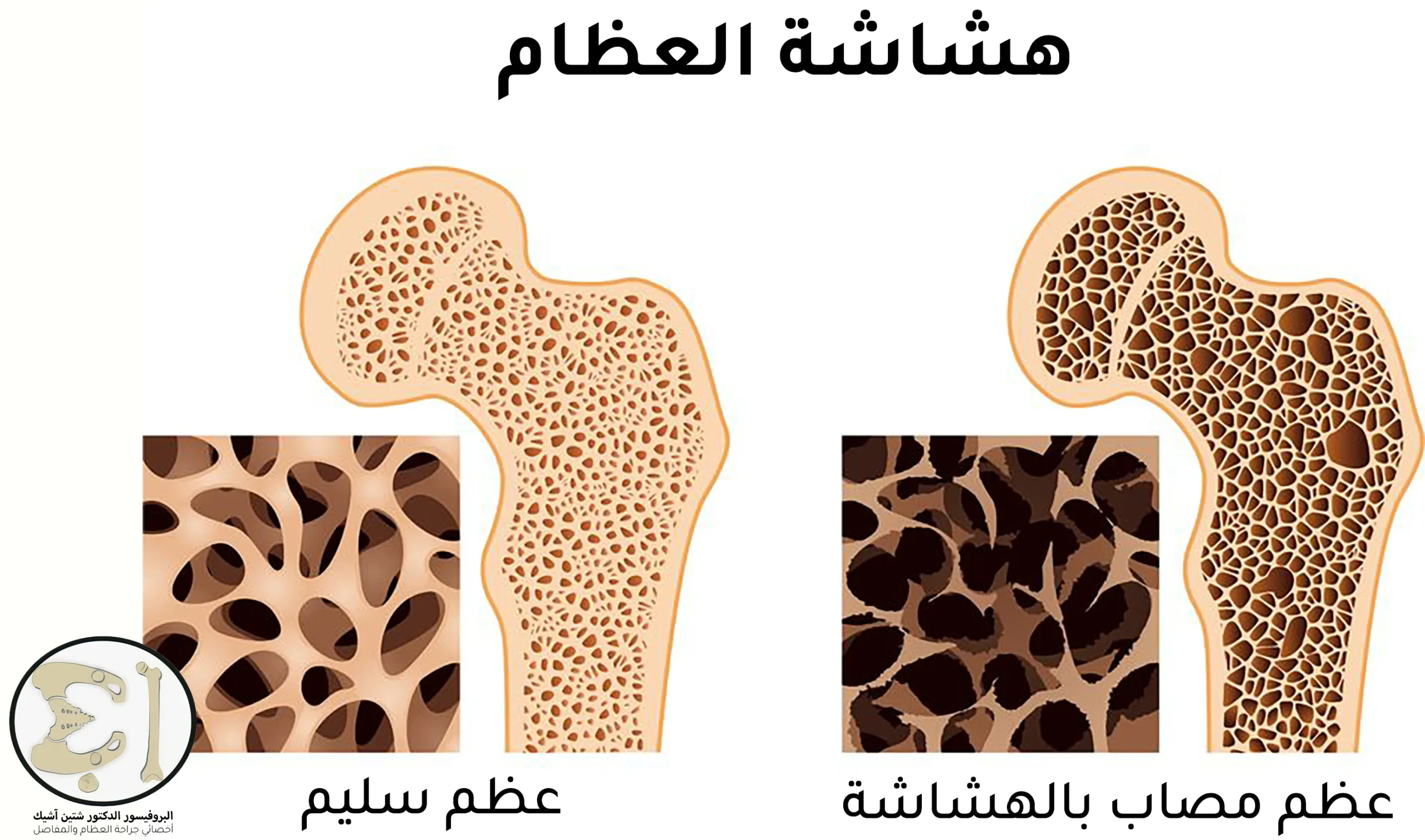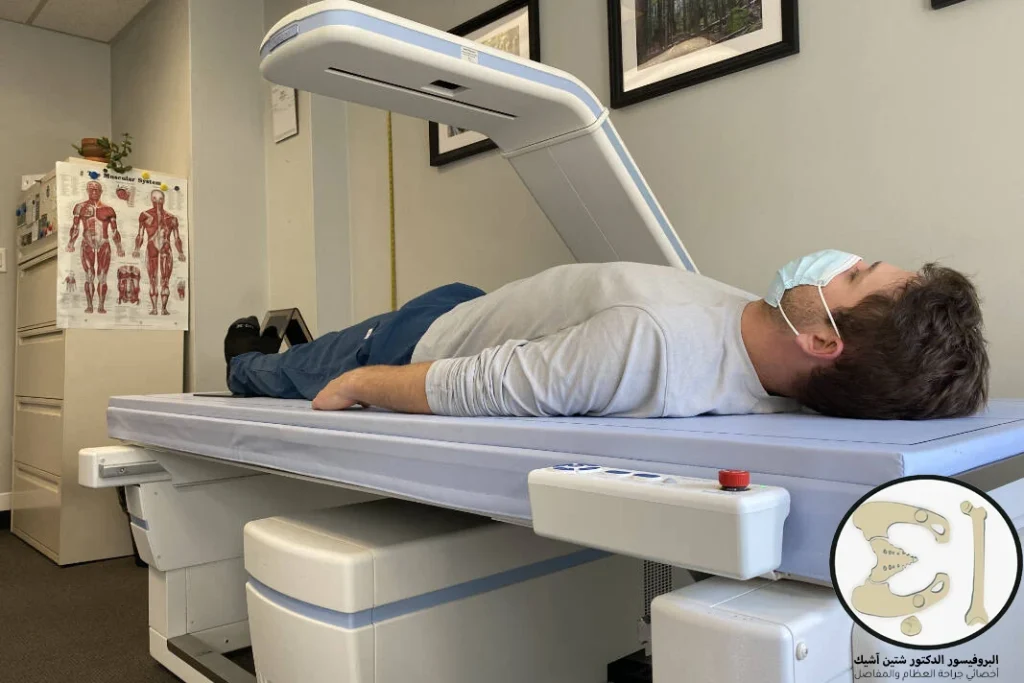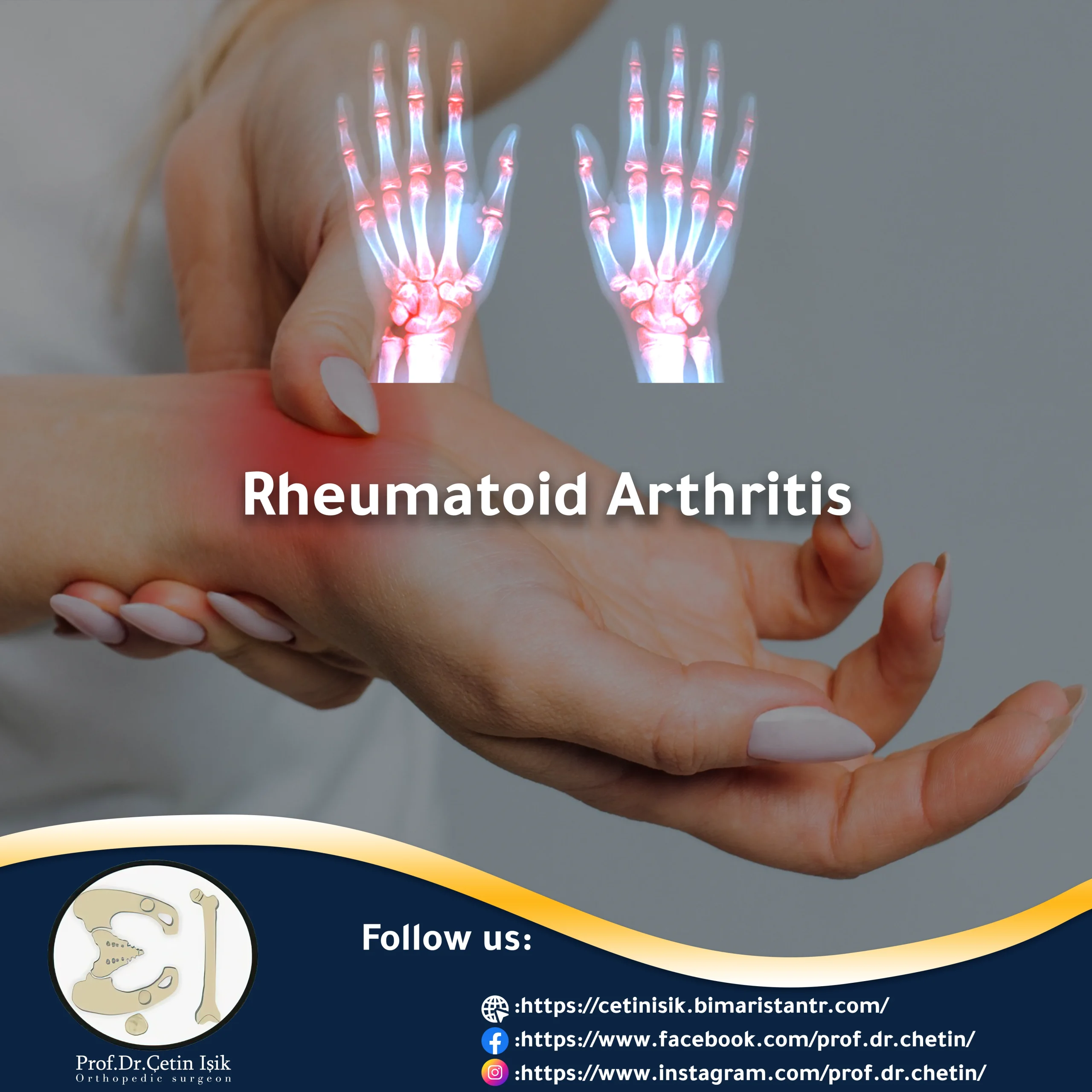Treatment of osteoporosis is usually based on compensating for the decrease in bone density by giving calcium and nutritional supplements, and it is a disease that greatly affects the joints and the body, but it is easy to treat.
definition of osteoporosis
Osteoporosis is a bone-progressive disorder that leads to an increased risk of bone fractures due to decreased bone mineral density, loss of normal bone structure and adequate mineralization, or decreased bone strength.
Often this condition remains asymptomatic and is not diagnosed until a late stage in which the patient suffers from breaking his bones due to minor injuries, especially the bones of the hip, pelvis, spine, and forearm, which leads to his stay in the hospital for long periods.
It is expected that the incidence of osteoporosis will increase in the coming years, and although the problem is more common in women, it is diagnosed in men and can cause disability and loss of ability to walk.

An overview of the bone structure
Normal bones are tough and durable structures that provide structural support, allow movement and movement from one place to another, and protect vital and important organs in the body, in addition to being stores of calcium and phosphorous necessary for bone growth and stability.
Bone tissue includes different parts, there are:
- Dense bone that makes up about 80% by weight of bone
- cancellous or trabecular bone by 20%
With the presence of supportive tissues such as the fibrous callus that surrounds the dense bone from the outside so that it helps in the process of fusion of fractures in addition to being responsible for the transverse growth in the bone, and the bony lining that lines the dense bone and provides good perfusion for it.
Children are usually born with cartilaginous bones that gradually ossify until puberty under the influence of sex hormones such as estrogen. In the meantime, two growth processes occur, namely, longitudinal growth that stops after puberty, and transverse growth that lasts for life, and bone density gradually increases until the age of thirty.
Bones undergo a process called remodeling, as their shape changes over time as a result of biological changes or external stresses applied to them. It becomes of high density in an area subject to pressure and decreases in density in other areas. There are two types of bone cells responsible for this process:
- osteoclasts: Works on bone resorption continuously.
- osteoblastsIt replaces resorption by creating new bone tissue.
This process allows the preservation of strong bones and the repair of bones that were weak in order to function properly, and there is a constant ratio that achieves a balance between resorption and synthesis.
Causes of osteoporosis
Naturally, the incidence of fragility increases with age and is more noticeable in women with estrogen disorders.
Among the causes and risk factors for osteoporosis:
- A family history of bone fractures or fragility
- Bone fracture after 50
- Ovariectomy before menopause
- Early interruption of the period
- Not getting enough calcium and vitamin D
- cigarette smoking
- Some types of medicine, such as joint and asthma medicines
- Not getting enough exercise.
Before osteoporosis occurs, bone density decreases, and this leads to a weak ability of the bones to bear pressure, but not enough to cause fractures, and this condition is called osteopenia.

Osteoporosis patients need special care before Specialized medical staff To monitor the situation and prevent its development.
Symptoms of osteoporosis
Osteoporosis is often without symptoms during its onset, but if the disease causes symptoms, the doctor may notice:
- Receding gums
- weak grip strength
- easy to break nails
The patient may notice some symptoms as the stages of the disease progress, including:
- Pathological fractures: These fractures occur without a strong etiology. The patient may describe stumbling, falling stairs, and the fracture occurring unexpectedly.
- Curvature and short stature: Especially when the vertebrae are affected by fragility, as they lose their rigidity and begin to collapse and fuse, which will lead to deformation of the back and curvature.
- Bone pain: The patient does not feel any pain at the beginning of the disease and it is rare for the patient to mention bone pain before his pathological fractures occur.
- Arthritis: As a result of the lack of bone density, the joints will be under increased pressure without the strong bone tissue that supports them.
- Sudden back pain The patient complains of stabbing pain in the lower back due to a fracture in the spine as a result of vertebral compression.

Diagnosis of osteoporosis
In order to diagnose osteoporosis, orthopedic doctors usually measure the patient's height because the bones of the back and spine are the first bones affected. This is followed by a bone density test called DEXA test, which is the primary method that doctors rely on to determine if early treatment is needed.

CT and echocardiography sometimes provide useful information about osteoporosis, but bone density measurement remains the most common method of diagnosing the condition.
Methods for treating osteoporosis
The treatment of osteoporosis is based mainly on the prevention of pathological fractures in the bones and taking medications that contribute to strengthening and strengthening the bones. Appropriate treatment also contributes to the prevention of new injury in the event of previous fractures.
Osteoporosis is a chronic disease that affects the bones of the body and there is no definitive treatment for it. Therefore, most treatments for the condition focus on relieving symptoms and living with them. Although the diagnosis of the disease depends on certain laboratory findings, the therapeutic decision is made based on factors that include:
- the age
- sex
- The risk of fractures
- Previous injuries
- Extent of bone loss
- patient preference
For example, elderly people with osteoporosis, their treatment differs greatly from the treatment of women in menopause, and certainly athletes who suffer from frequent bone fractures undergo treatment that suits their condition and prevents their fractures.
The most common methods of treating the disease include:
- Follow a special diet
- Exercise
- Quit Smoking
- take medicine
- hormonal osteoporosis treatment
Some of the previous osteoporosis treatments can be used in prevention.
Osteoporosis drug treatment
The first and most important way to treat osteoporosis and improve bone density, and the most common types of medicine that are given:
bisphosphonates
Bisphosphonates are considered an anti-bone resorption medicine, and they are given according to the daily, weekly, monthly and even annual program. There are many types of them:
- alendronate
- abandronate
- zoledronate
Treatment of fragility usually lasts three to five years and remains effective even after stopping treatment, and its side effects include high fever, headache and increased risk of fractures if the period of use is longer than 5 years.
biostimulants
For the treatment of osteoporosis, a compound called denosumab is given as an injection once every six months, and it is used when previous treatments fail, and it can be used in the treatment of renal failure, it may cause bone infections as a side effect, but it is not common.
structural factors
It stimulates the anabolism of bone tissue for the treatment of osteoporosis and includes:
- romusuzumabTwo injections, once a month for a year
- Teriparatide and abaloparatideIt is given on a daily basis for two years and is similar to the hormones of the parathyroid glands in terms of composition
When all previous treatments fail, orthopedic treatment may be resorted to with a drug called Protelos, which significantly reduces the incidence of fractures in the vertebrae and hips, and may cause abdominal pain and diarrhea sometimes.
Hormonal treatment of osteoporosis
Treatment in this way includes the administration of estrogen and raloxifene, and because estrogens may cause side effects such as thrombosis and heart disease, treatment in this way is limited to postmenopausal and young women.
Osteoporosis in a man can be treated by giving testosterone to raise his bone density, especially if he has been complaining of his deficiency for a long time.
Sometimes synthetic hormone therapy, such as calcitonin salmon, is given, which specifically reduces the risk of bony spine fractures and is less effective in preventing second fractures in the body.
This treatment is associated with many side effects such as sensitivity, rash and epistaxis and is not recommended for first-line treatment of osteoporosis.
Herbal treatment for osteoporosis
Red clover contains compounds similar to human estrogen, and since estrogen has a protective role for bones from osteoporosis, eating red clover can protect bones and slow down the pathological course of the condition. It is possible that the substances contained in this flower interact with many medications, such as birth control pills, so medical advice is indispensable before taking it.
Native American tribes used black cohosh to treat osteoporosis and many other diseases, in addition to being an insect repellant because it contains phytoestrogens. And it was conducted a British study In 2008, black cohosh was proven to be effective in building normal bone tissue in experimental mice, and more research must be done before its effectiveness can be confirmed.
Finally I mentioned some Studies The use of thyme in the treatment of osteoporosis, as it showed better results than taking nutritional supplements containing calcium and vitamin D, in addition to containing vitamin K, manganese and zinc, all of which are necessary in the treatment of any bone disease.
Prevention of osteoporosis
Diet and a healthy lifestyle are the cornerstones of prevention and hormone replacement after menopause plays an important role in avoiding treatment.
It is recommended to eat foods containing calcium such as milk, eggs and some vegetables such as broccoli and dried figs, and there may be a need for nutritional supplements. the sun on a daily basis.
Life tips to prevent osteoporosis include:
- Maintain a daily exercise regime
- Avoid drinking alcohol and cola
- Avoid excessive stimuli
- Refrain from smoking cigarettes

It should be noted that osteoporosis is a chronic condition that affects bone density in the body and requires follow-up treatment by specialists on an ongoing basis, and it is often not enough to take more calcium, for example, to treat the problem.
Don't hesitate to Contact us Learn more about treating osteoporosis and how to prevent it.
Sources:
- National Health Service UK
- Endocrine Society
- Cleveland Clinic
- National Library of Medicine
- Canadian Geriatrics Journal
Common questions
The amount of bone loss will gradually increase, and the bones will become easy to break, especially the pelvic bones.
Yes, osteoporosis may cause many fractures in the spine, which will later lead to short stature.
Osteoporosis has a familial pattern of transmission, meaning that if a close relative suffers from it, the incidence will increase significantly.
Osteoporosis patients should avoid excess salt in food and avoid hydrogenated oils in frying pans and fast food.
Unfortunately, there is no definitive treatment for osteoporosis, but it can be lived with and its symptoms relieved.




